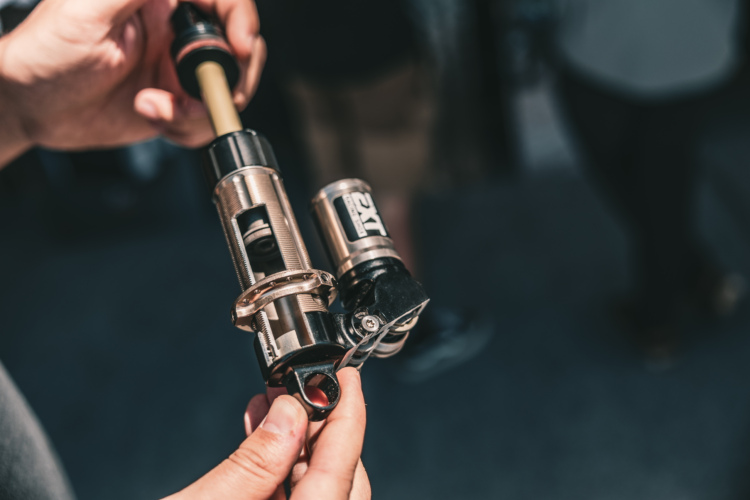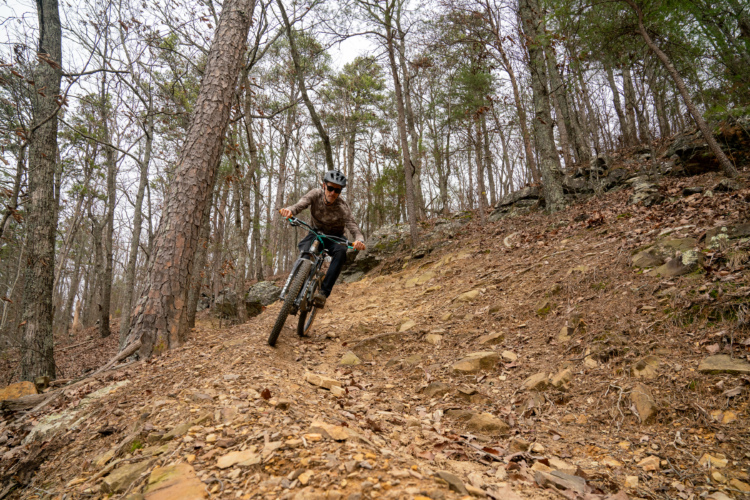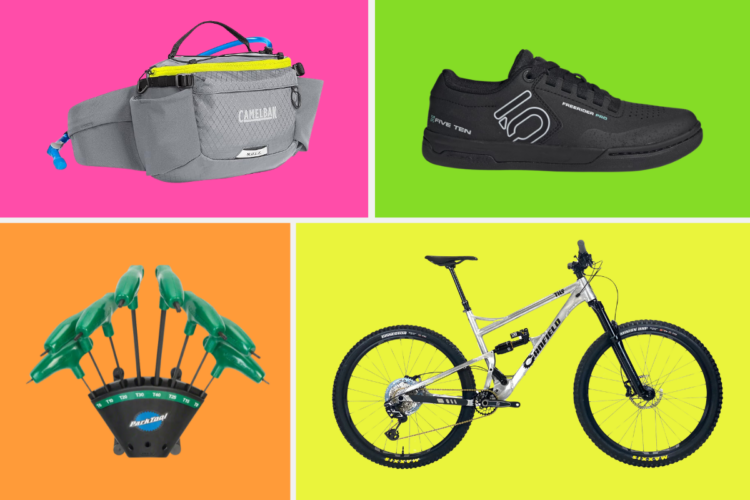
In a world where words like; supple-off-the-top, slack, long and low are common conspicuous marketing terms, New Zealander and product design engineer Cam Monteith was in a position where he couldn’t find a bike he actually wanted to buy.
Monteith grew up exposed to motorsports and was never shy about working with tools, breaking motorcycles apart, TIG welding and experimenting with carbon fiber at a young age. Monteith naturally used his skills and hands-on experience to build the bike of his dreams, however his path was a bit different than the classic “building bikes out of the garage” story.
I met Monteith when we worked at Bike Co. Whistler’s Original Bike Shop. He impressed me with his positive, upbeat attitude and proficiency with spanners. He always tinkered with something, whether it was 3D printed titanium bits for his bike or a CNC machined linkage.
Monteith not only designed and built the Squatcho while working a day job, he has raced in a smattering of events: the Trans BC Enduro, the Canadian National Enduro Championships, a couple Canadian Enduro League stops and a few Phat Wednesday events.
After a long summer, he recently finished the third iteration of the Squatcho, including a new paint job in the front triangle, internal cable routing, an updated main rocker link and some frame reinforcement. These changes were made just to tidy things up and ensure longevity.

With the modern state of the industry, it is hard to think of a gap in the bike offerings from the major bike brands, but Monteith’s understanding of suspension kinematics led him to develop something new. He started Factory Cycles by building the Squatcho, a 175mm rear travel platform with a unique linkage design, with features like a floating brake mount that isolates braking forces and a progressive, yet consistent leverage curve. The bike delivers ride characteristics that are hard to find in mass-production bikes, says Monteith.
To dig deeper into the nitty-gritty details of Monteith’s first bike and where his project is going, I asked him a few questions.
Who is Cam Monteith?
Just a random fella from New Zealand. Really I’m just a standard kiwi bloke who thrives on making cool shit for cool people.
How did Factory Cycles get started?
Factory Cycles is the culmination of years of design and hands-on experience. The idea with the Squatcho was to make a bike that people didn’t understand, making it a talking point in the lift line or grinding up a fire road. I wanted to portray my skills not only as a designer but as a maker. I’m trying to push the bike industry to somewhere it hasn’t been before.
What is your design process like? Were you already in Whistler when you started designing the bike?
Luckily for me I had a winter off and apart from skiing, I needed something to do. I always wanted to make a bike and this was the perfect place and time to get that done. Whistler being somewhat the capital of mountain biking for the world, it’s a great place to shoot questions off to builders and riders in the area. The design process always starts off as a list of things I want in a bike, then linkage, CAD, ordering, and the fun part; making.
It looks like your background and previous skills are extremely wide.
Are there any specific skills or experience that were directly transferable to bikes? What has been the most difficult part of the design and learning process?
I think having a good grasp on how things are made is a huge help. I worked in manufacturing for five years before I headed overseas and knowing all types of steel and metal fabrication is a huge bonus. I’ve also been a hobbyist welder from a young age and have always enjoyed making things from steel.

One of the current trends in the industry is high-pivot suspension designs due to their ability to fine tune anti-squat and anti-rise values. What is your take on these designs? Did you ever consider making a High-Pivot Squatcho?
You have nailed it there, it’s a trend and I don’t think it will last. High-pivots are aneasy and cost effective way to make a great bike. I think it will be similar to the upsizing of bikes that happened a few years ago. I never really considered a high-pivot. I’m not a huge fan of idlers and the complexity they bring to the design.
What are your goals when tweaking the anti-rise and anti-squat characteristics of the bike?
For the first Squatcho not really. There is so much more than kinematics that goes into making a good bike and I needed a blank slate in order to make the platform better. Though I spent a long time getting the kinematics that I wanted, I also needed a platform that I could revise in terms of flex, geometry etc.
The Squatcho has a fairly straight progressive curve. What is the reasoning behind this characteristic?
I wanted my curves/lines to be as straight as possible so that the suspension could work without other factors affecting the performance. Having straight curves makes the suspension feel a lot more predictable and making tunes for the shocks becomes easier.

Obviously, the Squatcho has a unique suspension design, but as far as geometry numbers go, what kind of goals did you have?
It really depends what kind of bike you are after. I wanted an enduro race bike, so in my mind those geometry numbers reflect what I thought I wanted. I do, however, think people in general ride reaches that are far too long. For example I’m about 6’4” and I run a 480 reach. I wanted a bike that I felt like I was riding inside of, not over, under or behind. I think you should be able to dance around on a bike and feeling like you are part of the bike makes it feel a little more comfortable.
The build spec on your bike is extremely well thought out. Can you tell us a little more about the parts you are running?
I suggest everybody should start making bikes. People love giving you free parts when you make something a little out of the box. I put a list of parts together and then reached out to all those companies to see if they wanted to help out. Amazingly all of them were super keen. North Shore Billet were a massive help through the project. They actually let me borrow their welder and shop to weld the first few frames, then shouted (sent) me pre-production 160mm Talon cranks which are awesome. I also got help from Shimano Canada for the drivetrain and brakes, a OneUP cockpit and post, Alba Distribution and EXT for the squish, Chromag wheels and the continued support from Whistler Bike Co.
Having the Whistler Bike Park as your everyday testing grounds must be a true asset. How has riding the bike park Shaped your design process?
Absolutely. Being able to ride a minimum 1k downhill vert a day massively helps your riding and it also tests bikes out to their limit. I had two failures throughout the season, both being rockers and both being bad design decisions. I’ve been very surprised the bike hasn’t folded on many flatlanded Dirt Merchant laps. I’m definitely not a weight weenie, I’m rough on gear and need a bike that will last with all my worst line choices.
Currently, Monteith is designing a new DH bike to test and race in the Crankworx Air DH next year. This new bike utilizes the rear end of 2023 Giant Reign Carbon as a starting point, as the rear end of the Squatcho and was by far the most expensive part of the build. Regardless of what Monteith continues to develop, it will likely surprise the bike industry.







